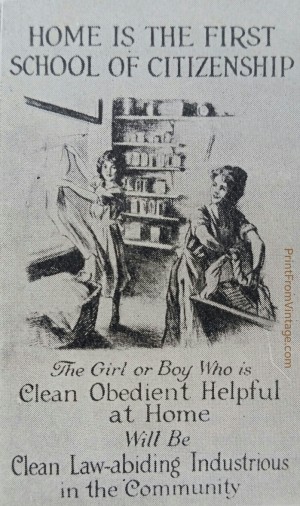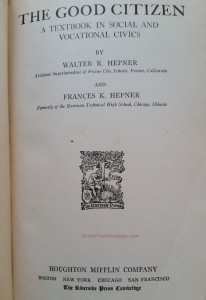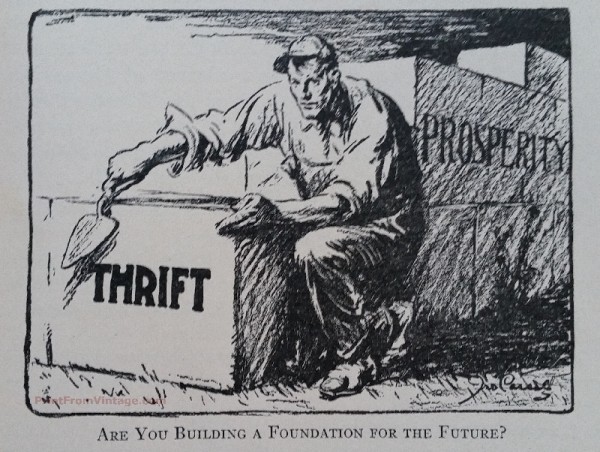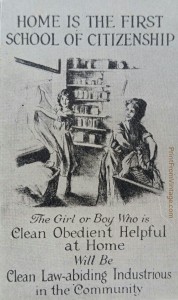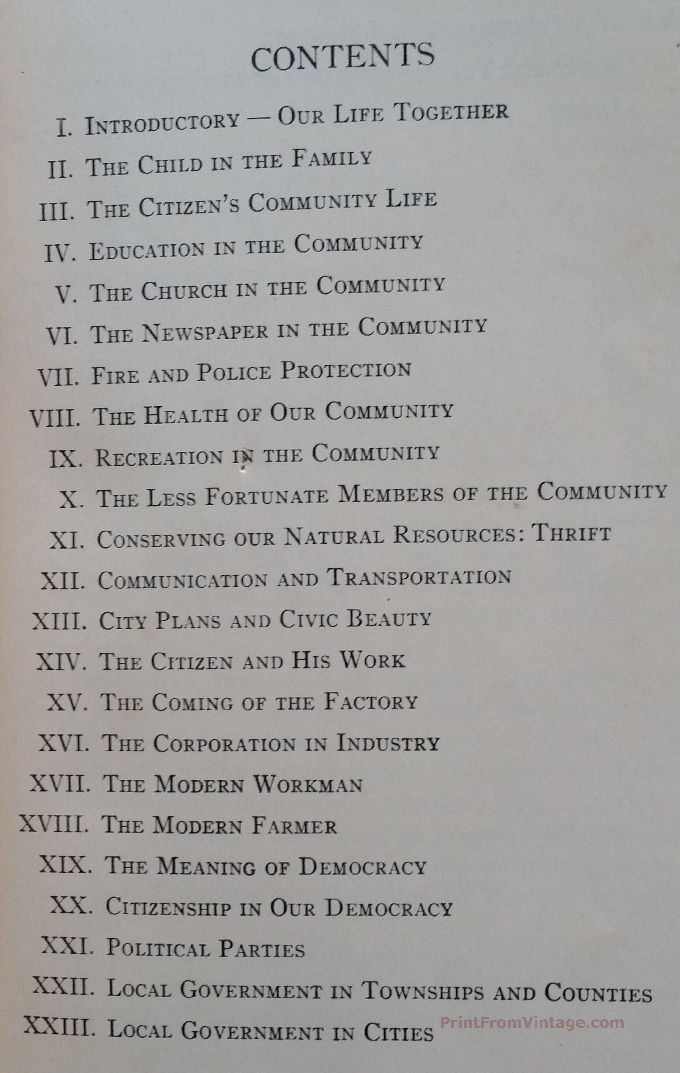This is ‘A Textbook In Social And Vocational Civics’ by Walter and Frances Hepner and it was published in 1924.
The first chapter discusses our human history together revealing that we have always lived in groups and that ‘man’s most vital interests’ are ‘closely related to the welfare of the other members’ of our community. However, it also recognizes the fact that times have changed.
‘As civilization has advanced, people have gained more liberty to select their associates’ and ‘to adopt new manners and customs’. ‘However, a man’s greatest interest are still bound up with the welfare of others’. These are noble words given to us over 90 years ago. However, it is as if we have strayed from that ‘good citizen’ path since because although we are still born and raised by our families which is relatively good, the biggest determent that we face from straying from this path (according to this book) is:
losing our ‘habits of industry’.
The difference between a ‘farm life’ (in which children were given specific chores to complete during specific times of day in order to develop the sort of character needed for such industry) and the ‘city life’, (in which there is no field to toil and children have gained a leisurely life in which their time may be spent ‘playing games’ ‘making collections’ ‘reading’ athletics’ or working odd-hours in grocery stores and news stands) is that this has resulted in families not being able to develop good habits of industry.
According to this book, it stands to reason that any child without a good home is less likely to respect the authority of others in our society (teachers, policemen) and therefore, ‘if our family fails to teach us these lessons, it is hardly possible that we shall learn them elsewhere, for:
‘No other group can give the time and energy necessary for the development of such qualities’.
Let’s take, for example, a law that sets the speed limit. We all agree that we should not be driving so fast as to endanger others. However, one person might think that 35 miles an hours is too fast while another believes that 15 miles an hour is too fast. Therefore, when the city council selects the appropriate speed for us by posting signs to direct us, the question is settled and it is our job (duty) to obey the law. ‘By obedience to the law we show our willingness to cooperate for the safety of all; by disobedience we advertise our poor citizenship, and also lay ourselves open to the arrest and fine or imprisonment.’ This is all good and well when laws are designed to truly protect us all and in disregarding them ‘our liberty will not be increased,’ as we tend to believe ‘but will be entirely lost’ by disobeying them.’
To supplement this lack of knowledge in industry a civilization developed with education (schools, libraries) and religion (churches). However, this book describes it as ‘a large part of our actions is controlled by customs, institutions, and ideals which have been handed down from generation to generation’ which suggests that this civilization is as fine as humanly possible because ‘we know we are the descendants of a long line of ancestors who have spent their lives working and thinking.’
It is also said that through these schools, libraries and churches ‘we are bequeathed the rich heritage of their experience.’

The point being is that whether we know it our not, everything that we have ever been taught is for the purpose of creating a world in which we learn to obey or risk losing our ‘liberty’.
For example, dad farms the field, mom cooks the food, kids milk the cows and collect the eggs. Without that tapestry of workings it is very difficult for each member of the family to survive on their own. In that way, we are very much connected to each other, even in a much larger picture. Therefore, because the task has fallen upon such institutions as schools and churches to supply this knowledge of industry, there is really only one tapestry that we are weaving. Remember, ‘a large part of our actions is controlled by customs, institutions, and ideals which have been handed down from generation to generation’.
However, it is safe to say that the one thing that we have been taught throughout our lives is how to enter the workforce that we are all a part of today which is normally embedded in commercialization, not industrialization. However, this book explains why this is the superior way of life. Even though it admitted earlier that, ‘if our family fails to teach us these lessons (of industry), it is hardly possible that we shall learn them elsewhere, for no other group can give the time and energy necessary for the development of such qualities’.
Other Contents Of This Book:
I’d be interested in covering the chapter about ‘Conserving our Natural Resources’ next. I do love what old books have to say about the way we live today! Thanks for reading!
